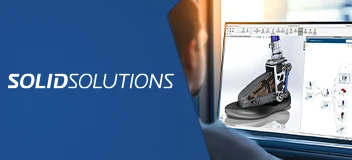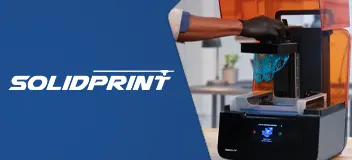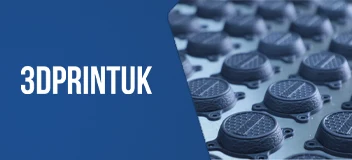Electrical Schematic Designer Training Course Overview
Learn how to use the 3DEXPERIENCE platform to effectively create and manage electrical CAD documents using 3DEXPERIENCE Electrical Schematic Designer.
This course focuses on topics that provide engineers with a clear understanding of the skills, tools, and concepts available, which can then be applied to a range of industry design challenges while providing insight into how 3DEXPERIENCE Electrical Schematic Designer can be employed to fit current in-house development practices.
NOTE: Participants will require access to their own 3DEXPERIENCE Tenant for this training course. Access to software is not included with the course.
Course Requirements & Benefits
Understand the course requirements and the skills you will acquire after completing the 3DEXPERIENCE course
Electrical Schematic Designer Lessons
The following lessons are included in the course

Lesson 1: Project Templates
- SOLIDWORKS Electrical
- Stages in the process
- Starting SOLIDWORKS Electrical
- The user interface
- What are projects?
- Project templates
- Project configurations
- General
- Graphic
- Symbol
- Font
- Mark
- Title blocks
- Libraries and palettes
- How is a project structured?
- Book
- Folders
- Drawings
- Stages in the process
- Project storage
- Formula managers
- Title blocks
- Exercise 1: Creating a template
Lesson 2: Modifying Project Templates
- What are environments?
- Stages in the process
- Draw multiple wires
- Style selection
- Wire style selection
- Project macros
- Environment data selection
- Exercise 2: Modifying a template
Lesson 3: Drawing Types
- What are drawing types?
- Drawings
- Scheme
- Creating drawings
- Stages in the process
- Existing and archived projects
- Opening an existing project
- Unarchiving a project
- Closing projects
- Line diagram symbols
- Adding symbols
- Symbols library
- Symbol orientation
- Adding cables
- Schematic drawing
- Scheme best practices
- Stages in the process
- Symbols panel
- Schematic symbols
- Symbol properties
- Types of properties
- Exercise 3: Drawing types
Lesson 4: Symbols and Components
- What is a component?
- Component identification
- Component symbol identification
- Stages in the process
- Symbol component association
- Exercise 4: Symbols and components
Lesson 5: Manufacturers Parts
- What are manufacturers parts?
- Circuits and terminals
- Circuit association
- Stages in the process
- Finding manufacturer parts
- Search options
- Editing parts
- Circuit symbols
- Circuit association
- Exercise 5: Manufacturers parts
Lesson 6: Wires and Equipotentials
- Equipotentials and wires
- Wire styles
- Stages in the process
- Wire style manager
- Numbering group
- Replacing wires
- Replacement range
- Equipotential numbering results
- Wire numbering results
- Using nodal indicators
- Exercise 6: Wires and equipotentials
Lesson 7: Cabling
- What is cabling?
- Changes in the wiring diagram
- Stages in the process
- Cables
- Detailed cabling
- Terminal strip
- Pin to pin connections
- Wires
- Terminals
- Creating a new cable
- Adding terminals to the strip
- Terminals editor
- Copy and paste
- Exercise 7: Cabling
Lesson 8: Symbol Creation
- Symbols and standards
- Symbol creation
- Stages in the process
- Symbols manager
- Circuits, terminals, types
- Circuit transmission
- Connection point insertion
- Multiple attribute
- Splitting attribute data
- Add to library
- Copy, paste symbol
- Exercise 8: Symbol creation

Lesson 9: Macros
- What are macros?
- Stages in the process
- Creating and adding macros
- Creating a new group
- Project macros
- Paste special
- Exercise 9: Macros
Lesson 10: Cross Referencing
- What is cross referencing?
- Cross reference list
- Cross reference state colours
- Cross reference text coding
- Cross reference types
- Same level cross referencing
- Cross reference location listing
- Stages in the process
- Exercise 10: Cross referencing
Lesson 11: Managing Origin-Destination Arrows
- What are origin-destination arrows?
- Stages in the process
- Origin-destination arrows
- Interpreting the arrow text
- Exercise 11: Origin-destination arrows
Lesson 12: Dynamic Programmable Logic Control
- What is a PLC?
- Dynamic insertion
- Stages in the process
- Adding a new scheme
- Adding a PLC mark
- Inserting a PLC
- PLC configuration
- PLC configuration options
- Editing wires
- Editing a PLC
- Exercise 12: Adding a PLC
Lesson 13: Automated Programmable Logic Control
- How are PLCs automated?
- Stages in the process
- PLC Mark, Part
- Manufacturer data
- IO Manager
- Exercise 13: Automated programmable logic control
Lesson 14: Connectors
- Connectors
- Stages in the process
- Insert connector
- Connector insertion
- Exercise 14: Connectors
Lesson 15: 2D Cabinet Layouts
- What are 2D cabinet layouts?
- Stages in the process
- Creating a 2D layout
- Inserting ducts and rails
- Inserting components
- Wire cabling order
- Optimize wire cabling order
- Exercise 15: 2D cabinet layouts
Lesson 16: Design Rule Checks
- What are design rule checks?
- Stages in the process
- Unconnected pins
- Equipotential conflicts
- Max terminal wires
- Duplicated parent symbols
- Child symbols without parent
- Empty terminal strip
- Duplicated terminals
- Exercise 16: Design rule checks
Lesson 17: Reports
- What are reports?
- Bill of materials grouped by manufacturer
- List of wires by line style
- List of cables grouped by reference
- Drawings list
- Stages in the process
- Report templates
- Report columns
- Column formula
- SQL query column variable
- Sort and break
- Exercise 17: Reports
Lesson 18: Electrical Schematic Designer & the 3DEXPERIENCE Platform
- Accessing 3DEXPERIENCE
- Roles, Apps, and Widgets
- Save with Options
- Creating a Bookmark
- Lock & Unlock
- Resources
Training Methods
Choose the training method right for you

Group/Public Training
Receive training as a group (limited amount per class) from certified instructors using vendor approved training content and methodologies.
Training is delivered either live online or in a traditional classroom environment.
Advantages
- Cost effective training method.
- More effective than video based training, with videos learners are often not as focused on the training and skip exercises.
- Learn more through group questions and feedback.

Private Training
This style of flexible training is perfect for teams or individuals who are faced with a specific challenge and require personalized courses with on-the-job coaching.
Training is available live online, in-person classroom or onsite at your location.
Advantages
- Use our state-of-the-art mobile classroom at your facility.
- Bring your team up to a consistent level of knowledge by having them take the same training at the same time.
- Benefit from flexible scheduling options.
Upcoming Training Courses
Choose a scheduled 3DEXPERIENCE Electrical Schematic Designer course
Are you using SOLIDWORKS to its full potential?
Enhance your skills and capabilities with a SOLIDWORKS Training Assessment from TriMech.













